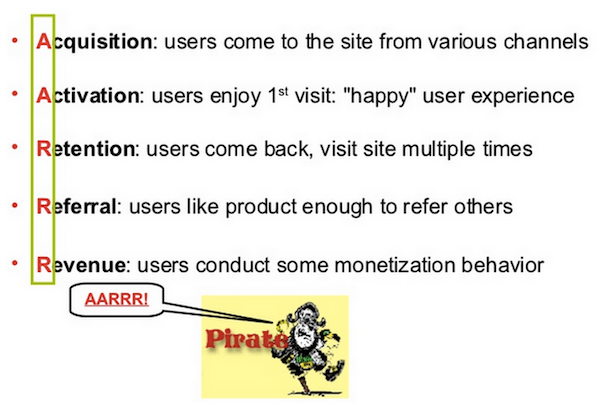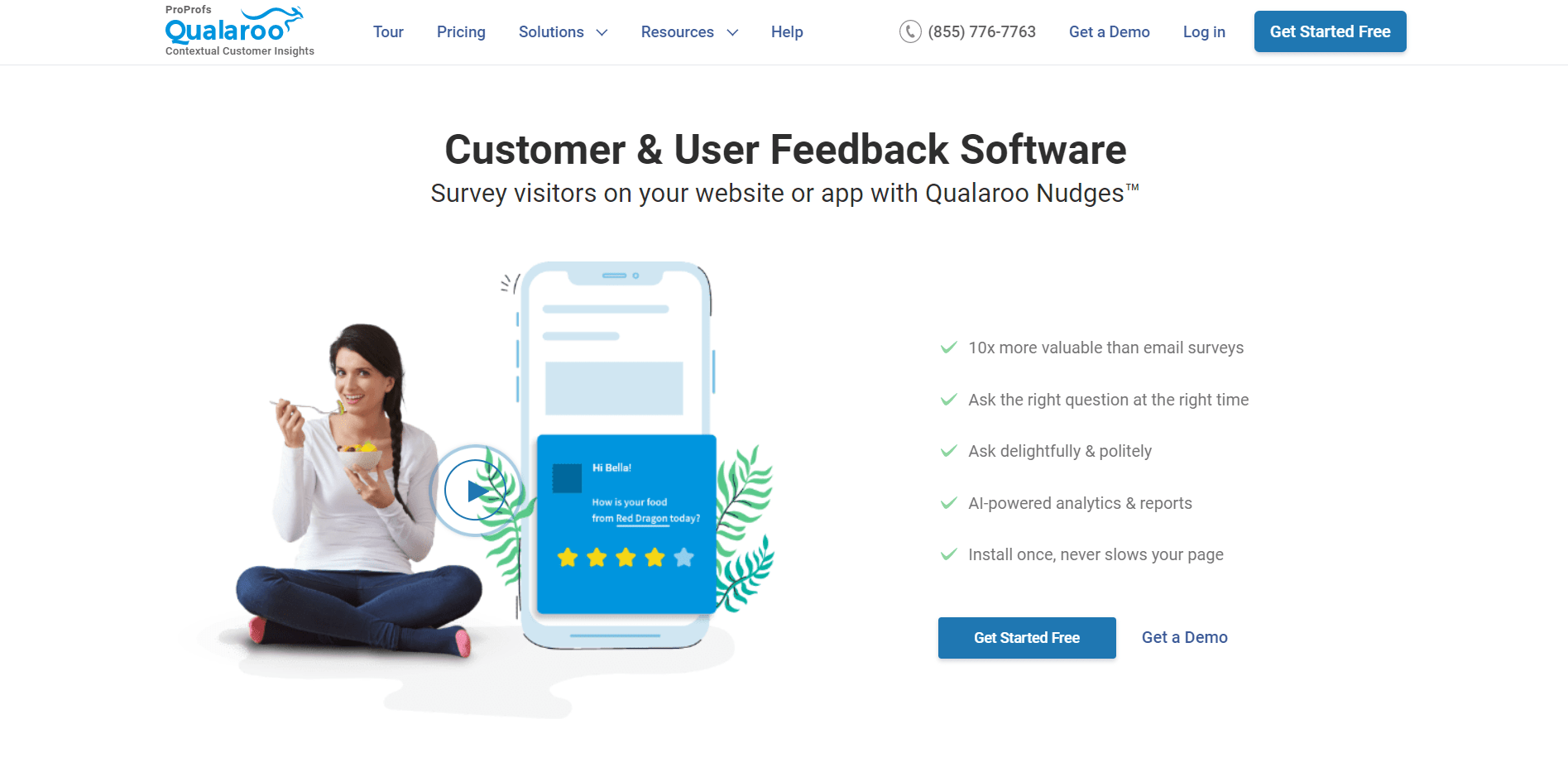Note: This is a guest post by Adam Metz and Sajad Ghanizada of PandaDoc. As we iterate on the Qualaroo blog we’ll be bringing you more outside perspectives on growth, marketing, conversion optimization and more. Have feedback about what you’d like to see on the blog? Drop us a note at mbrown@qualaroo.com or answer the Qualaroo survey if you see it pop up!
I overhear many conversations at conferences, and even in the bars of San Francisco, about how startup and small business sales and growth teams rarely understand what the other team does all day. So, as VP of Business Development, I sat down with my our growth lead, Sajad. We took a few moments to put together a primer, to help sales and growth teams understand one another better and work together more successfully.
What should every sales VP know about growth?
Contrary to popular belief, growth teams are not a group of wizards that use the latest in tools and insights to magically scale organization 10x overnight.
Startup employees often mistakenly associate growth teams with guerilla marketing campaigns and virality because they hear of ridiculous and rare overnight success stories (Yo, Flappy Birds, etc.).
The truth is, just as with investing, good growth teams never put all of their eggs in one basket. Growth encompasses everyaspect of the customer lifecycle from the moment leads are brought in, to the point where they start advocating on behalf of your brand.
Growth hacking vs. growth
Growth is methodical. It rarely happens overnight, and it revolves around something really boring: testing known unknowns. Growth teams don’t know what will work, so they create assumptions and test them, killing off the experiments that yield no results and scaling the ones that do.

A growth hacker, as Sean Ellis put it, “is a person whose true north is growth. Everything they do is scrutinized by its potential impact on scalable growth.”
When faced with bringing on employees that can focus on user growth, traditionally startups have always hired a marketing team.
But, with traditional marketing comes a traditional budget and unfortunately, traditional marketing channels. Think newspaper ads, trade show sponsorships, and outbound marketing.
When growth teams hire, they don’t spend time looking for marketing people who are also technically proficient in analytics, code, SEO, SEM, and split testing. That’s crazy talk.
What they need is someone with a technical background that understands how to grow through experimentation and measurement. Someone who can work on a non-existent budget and wear many hats between marketing, coding, user experience, and all things web.
Thus, growth hacking was born.
What are these people supposed to do at your company?
Think of your growth team as the people that come in to the office daily to spend the entire day testing, validating, and scaling new methods to drive leads to sales and thus, your bottom line.
They are the glue between sales, business development, your executive team, and the gatekeepers to the product team.
They prevent feature creep, drive company growth, and often, prevent you from buying that shiny new automation tool that’s a total money-waster. They are often involved in every step of your customer lifecycle, or AARRR.
AARRR / Customer lifecycle
What is AARRR? It’s a crazy growth acronyms that sounds like pirate speak. And it’s a funnel that growth lives by.

Pirate Metrics by Dave McClure
Dave McClure famously coined the term around 2006 to describe every step of the customer lifecycle. He gave growth teams a tangible way to measure growth by ensuring customers go through every step of the funnel.
AARRR starts at acquisition and ends in revenue. Throughout each step your growth team measures output to do two things:
1. Determine if users can successfully make it to the next step.
2. Measure the conversion rate between two steps (i.e. percentage of leads who go from acquisition to activation).
Once the user gets to sales, they’re at the top of the sales funnel, but that’s the bottom of the growth funnel.
The sales team now attempts to get revenue out of a user who, at this point, is excited to pay for an amazing product.
But the growth team’s work is far from over!
The silent killer of many SaaS products, churn, can strike at any point. A combination of awareness through metrics and proactive changes to customers experiences will reduce churn to manageable levels.
By working with sales, growth teams can identify red flags in their customers’ behavior within a product and address them before cancellation requests start flooding in.
“Just guess, then A/B test… a lot” – Dave McClure
At the end of the day, growth teams develop educated assumptions based off of past data and tests. A lot.
As a wise young man at Burning Man once told me, “We don’t know what we don’t know, maaaaan.”

Although his intoxication level was questionable, the young sage’s words represent the essential mantra of all startup growth teams. We don’t know what will work but based off of what has worked for others, we develop tests and execute them to failure or success.
Of course, you don’t have to guess if you use Qualaroo, because Qualaroo lets you ask your visitors what’s really important to them. If you’re not a mind reader, their on-site surveys will probably help you find winning tests faster.
Still, around 9 times of out 10, we expect the test to fail. But the 10% of the time that a test succeeds, that success propels the growth rate of the company to a level that makes up for the failures.
What should every growth lead know about sales?
1. Methodologies work. That’s why sales teams use them.
Sales managers and sales professionals don’t just pick names willy-nilly from Google, or even from our customer base. These days, we use smart analytical tools and lead-scoring to figure out which leads are worth talking to and which ones are time-wasters.
2. Sales cares about growth analytics. So put it in our CRM.
Perhaps 25 years ago, sales professionals were techno-phobic, but things have changed a lot in the last generation. Many popular CRM systems like Salesforce allow us to look directly at growth data from growth systems like Kissmetrics or Mixpanel. If growth team members can show us how that information increases or decreases lead scoring, we will use it that much more often.
Funnel velocity and sales analytics
Sales professionals are far more analytical than you think, and we want to know about any growth-related metric that wins deals. Besides looking at the usual suspects (win rate and lead-to-opportunity conversion rate), we look at:
- Funnel velocity: The time it takes for a lead to go from converted to “sold.”
- Marketing-to-sales service-level agreements: If we ever have an SLA with our marketing team, in terms of lead quality, we’re looking at it.
- Document analytics: Verifications that our leads and prospects look at all growth team landing pages, our presentations and our contracts.
Speaking of great document analytics… have you tried PandaDoc’s proposal and document analytics yet? Why not get 3 free documents to start with (you can even get 3 more with a tweet). No credit card is required, and you’ll be up and running in minutes.
About the Authors: Adam Metz is the author of Amazon #1 internet-marketing best-seller The Social Customer, and the VP of Business Development at PandaDoc. He’s a veteran sales executive who’s carried a million-plus sales quota for a Fortune 500 company (CDW) and run a sales channel for a Google Apps eco-system startup, UberConference.
Sajad Ghanizada is a full stack marketer and growth engineer at PandaDoc. He writes about SaaS growth and user behavior. Connect with him at Sajad.co.
 Tips
Tips
We’d love to hear your tips & suggestions on this article!
FREE. All Features. FOREVER!
Try our Forever FREE account with all premium features!

 We'd love your feedback!
We'd love your feedback! Thanks for your feedback!
Thanks for your feedback!







